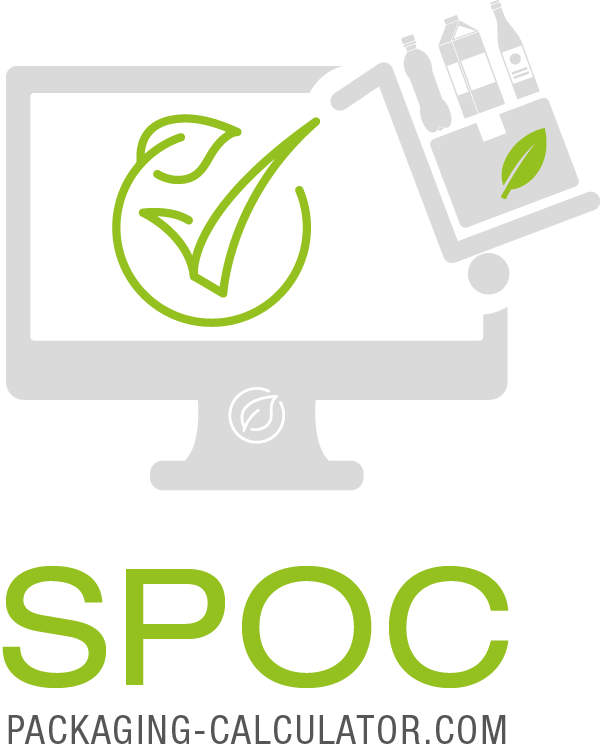SPOC uses data for the materials and technologies used to manufacture and process packaging, which are regularly updated. The data on energy production and the various disposal routes refer to the infrastructure in Germany, and an extension to other European countries will take place soon.
Transport data
Transport data is carried out in accordance with the specifications of Ecotransit. The transport calculations are very simplified and give only a rough estimate. However, the more detailed calculable data via Ecotransit can be entered into SPOC.
Example: Truck transport
Truck transport is based on a 40-tonne truck with Euro 5 standard for transport on a medium incline at a 60% capacity utilization. The transport of the individual packaging material components and the transport of the finished packaging is calculated in such a way that the packaging material is the reason for the transport. When transporting the filled packaging, the influence of the packaging is calculated in such a way that the packaged goods are the reason for the transport and the packaging only causes a weight surcharge during transport.
Example: Rail transport
The rail transit refers to an e-train with 1,000 tons and a capacity utilization of 60 percent.
Material
A large part of the material data are average values from the existing production facilities in the market, which are published by associations such as Plastic Europe, European Aluminium, Bundesverband Glasindustrie e.V. or the Verband Metallverpackungen VMV for the main packaging materials used. The data represent average values of a large part of the production sites in Germany / Europe. Even if the data from individual production sites differ, this average value is achieved on average when the respective material is used in the geographical area to which the values refer.
Generic data from, for example, BAT reference documents, national data sets, scientific or other LCA publications are also created if no means or specific data are available, or if this improves the quality of the data. Care was taken to ensure that the generically derived data reflect the current state of the art.
Self-created specific data for products / processes can also be entered in SPOC by the user if the primary process data is available, whereby the user is responsible for the quality of the data himself.
All data used is accurately selected for packaging and covers most of the materials and processes used in packaging, so common packaging solutions can be fully calculated.
For processing, data from usually modern equipment provided by machine manufacturers or manufacturing companies was used.
All data were checked for plausibility.


 English
English  Deutsch
Deutsch  Italiano
Italiano 